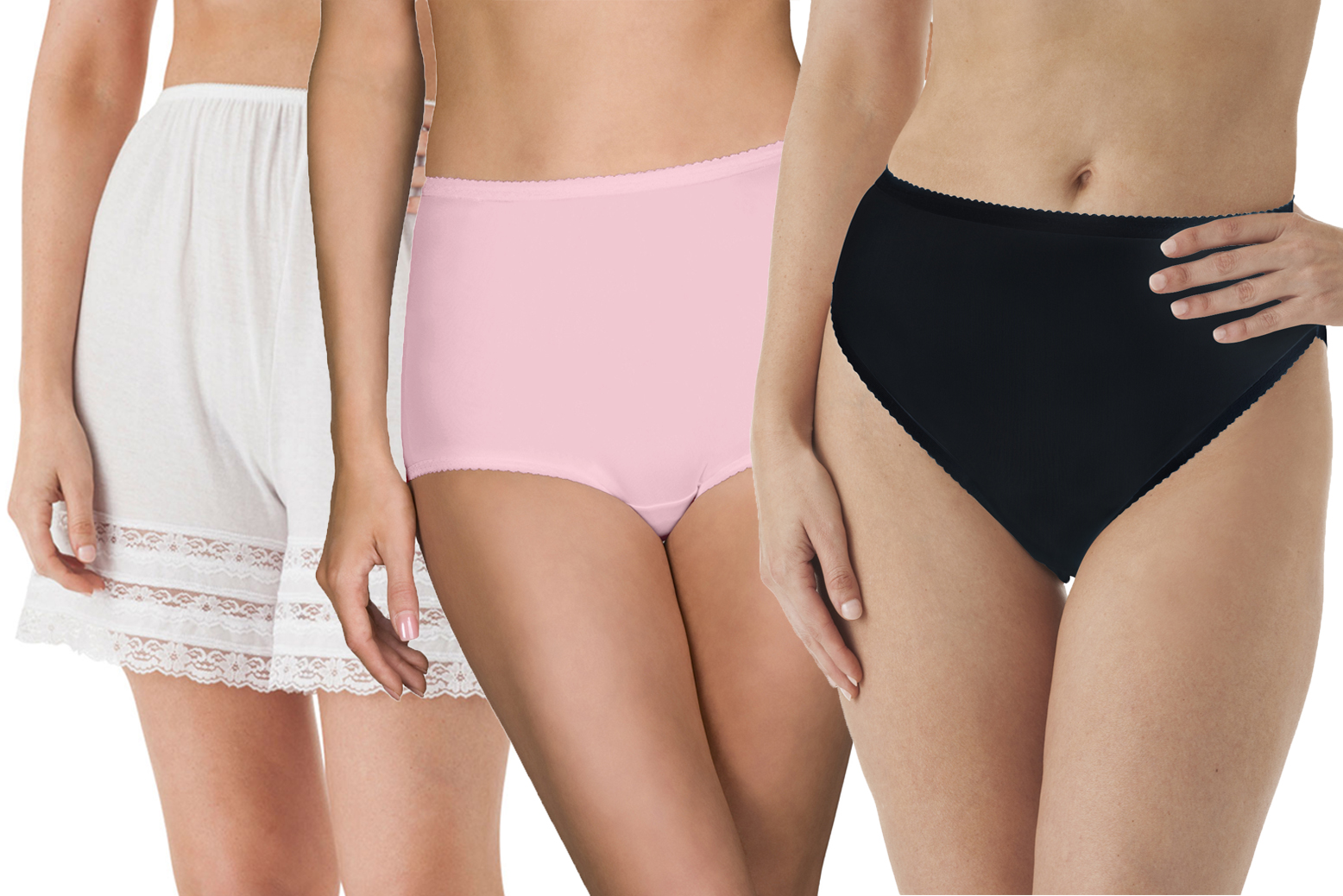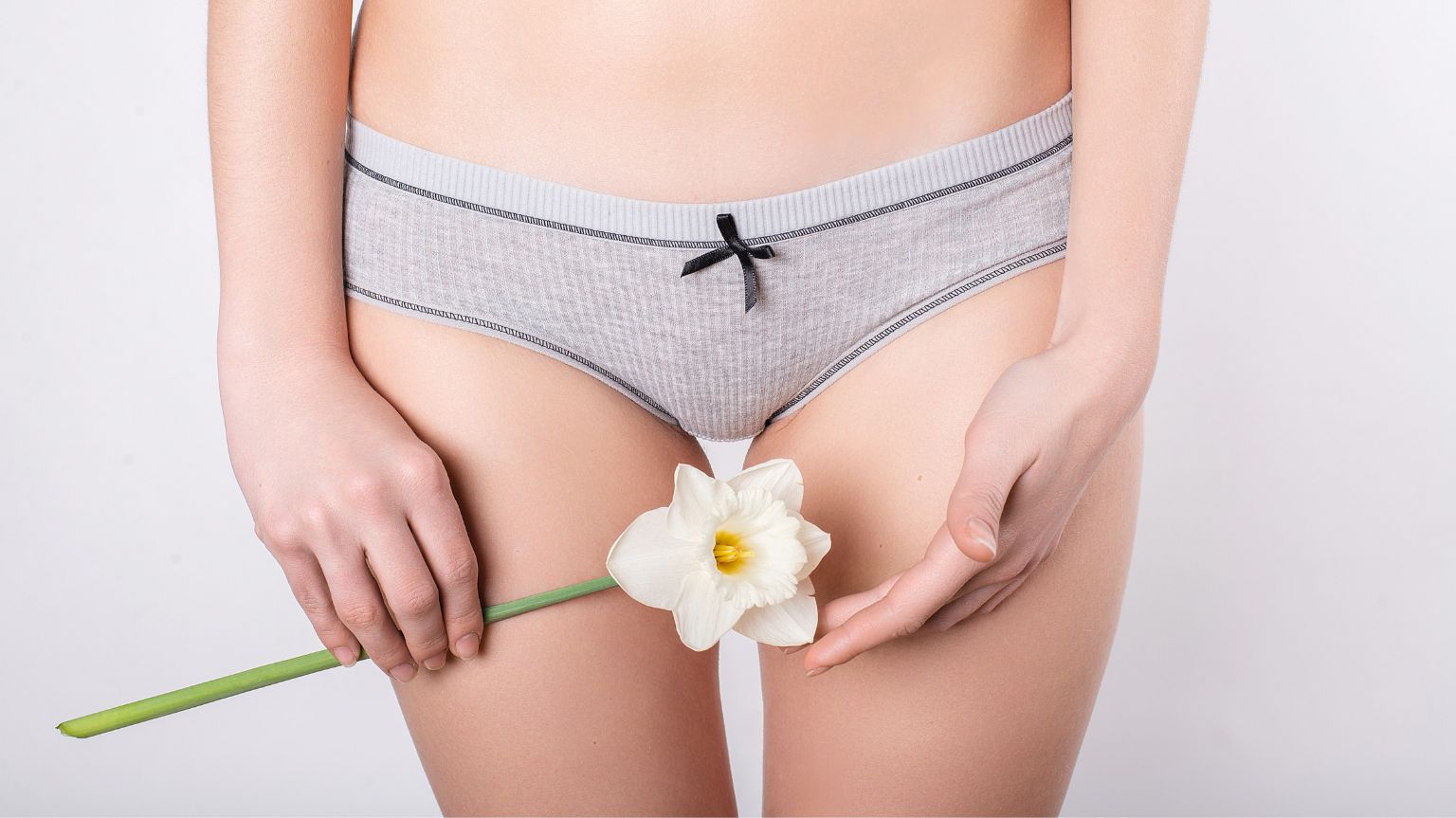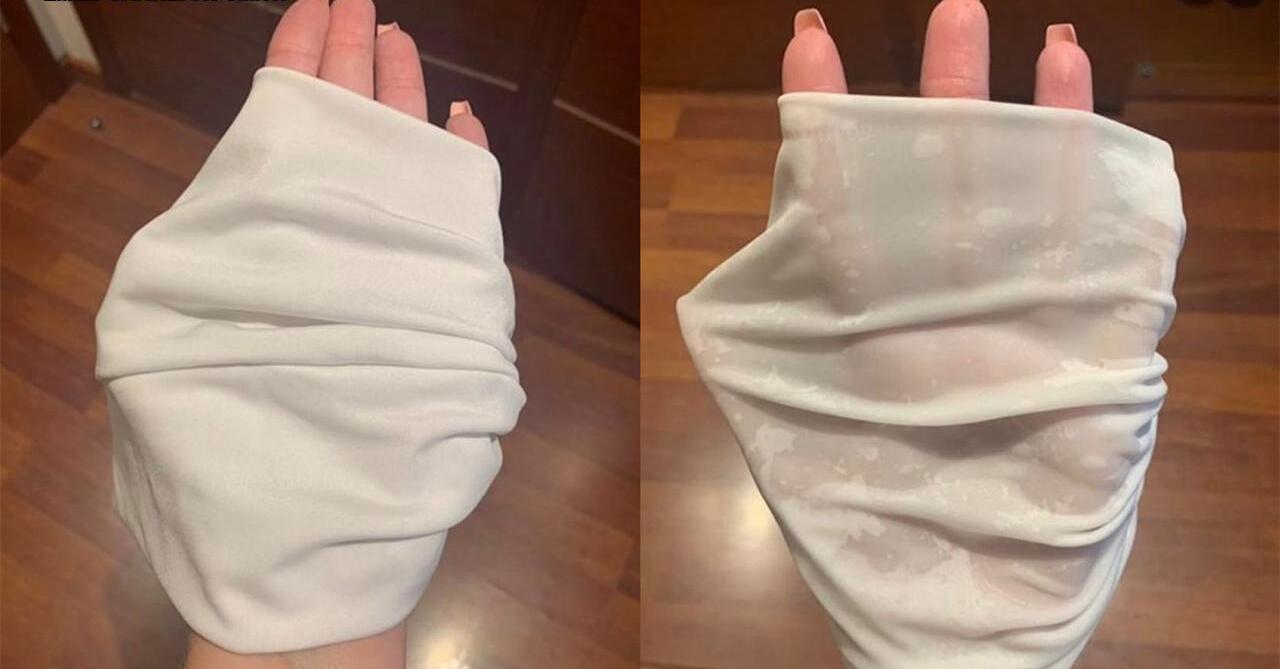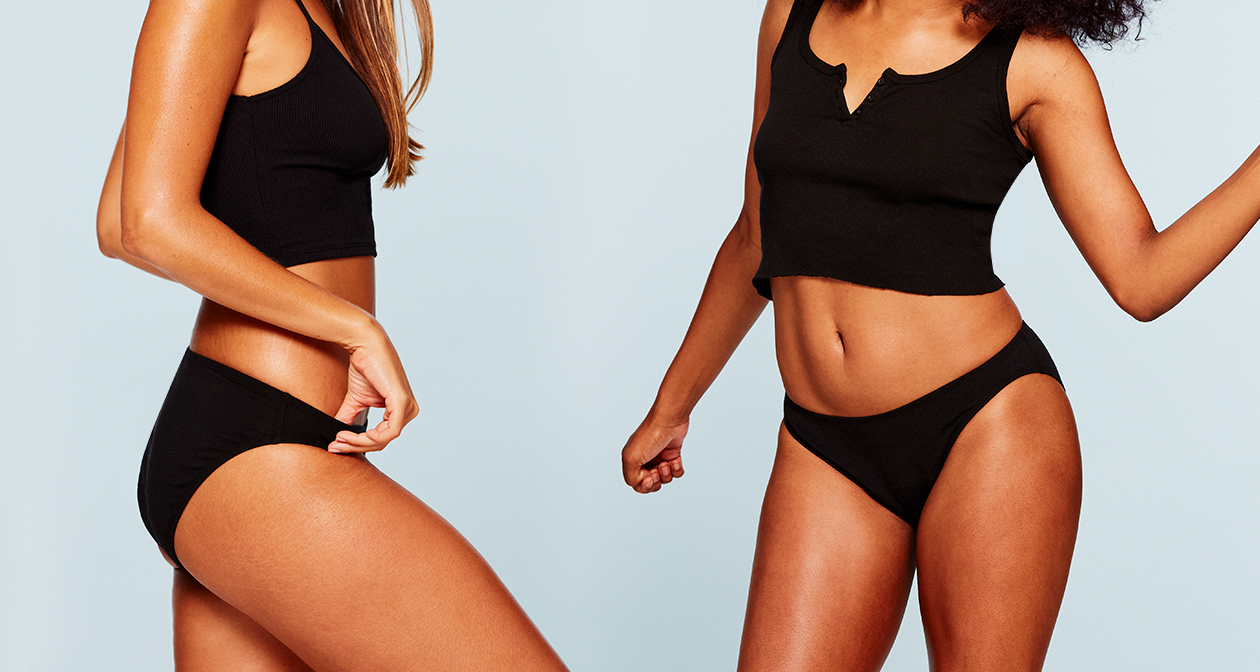

FAQs
When Were Panties Invented
Modified: August 2, 2023
Discover the fascinating history of panties and when they were first invented. Get answers to your general questions about this undergarment essential.
(Many of the links in this article redirect to a specific reviewed product. Your purchase of these products through affiliate links helps to generate commission for Under-tec.com, at no extra cost. Learn more)
Table of Contents
Introduction
Welcome to the fascinating world of panties! These intimate garments have become an essential part of our daily wardrobe, providing comfort, support, and style. But have you ever wondered when panties were first invented? Join us as we delve into the history of this undergarment and uncover its origins and evolution throughout the ages.
Panties, also known as underwear or knickers, are a type of undergarment worn by individuals of all genders. They are designed to be worn beneath clothing, providing a barrier between the body and outer garments. While panties may seem like a modern invention, their roots can be traced back thousands of years.
In this article, we will explore the early history of panties, their evolution across different cultures, and the innovations that have shaped the modern styles we know today. From ancient loincloths to luxurious lace creations, panties have undergone a remarkable transformation over time.
Throughout the centuries, panties have not only served functional purposes but have also been associated with social and cultural norms, fashion trends, and even liberation movements. Understanding the history of panties not only provides insight into the development of undergarments but also sheds light on human society and its attitudes towards clothing and modesty.
So, fasten your seatbelts as we embark on a journey through time to uncover the fascinating story of when panties were first invented and how they have evolved into the diverse range of styles we have today. Get ready to explore the ancient civilizations, the fashion revolutions, and the innovations that have shaped the world of panties as we know it.
Early History
The early history of panties can be traced back to ancient civilizations, where undergarments served practical purposes and were deeply intertwined with societal norms and beliefs. While the exact origins of panties are difficult to pinpoint, evidence suggests that various forms of undergarments were used in different cultures throughout history.
Ancient civilizations such as Egypt, Greece, and Rome relied on loincloths as the primary form of undergarments. Loincloths were simple pieces of cloth wrapped around the waist and secured with a belt. These garments provided basic coverage and protection, but they lacked the specific design and functionality of modern panties.
In ancient Egypt, loincloths were commonly worn by both men and women. These garments, made from linen or cotton, were often embellished with decorative elements and reflective of the social status of the wearer. The use of loincloths in Egypt can be traced back to as early as 3000 BCE.
In ancient Greece, men typically wore a garment called a perizoma, which was a narrow strip of cloth wrapped around the waist and genitals. Women, on the other hand, typically did not wear undergarments beneath their robes. However, they sometimes used a band called a strophion to support their breasts.
In ancient Rome, both men and women wore a garment known as a subligaculum, which was a simple loincloth wrapped around the hips. This garment provided minimal coverage and was commonly worn by athletes participating in sporting events and military personnel.
It is worth noting that in many ancient cultures, the use of undergarments was not widespread or considered necessary for daily wear. Climate, social status, and personal preference played significant roles in the adoption and style of undergarments.
While these early forms of undergarments laid the foundation for the evolution of panties, it wasn’t until later centuries that more tailored and gender-specific designs began to emerge. The transition from loincloths to more structured undergarments marked a significant milestone in the history of panties.
Join us as we explore the transition from ancient loincloths to the panties we know today and discover the cultural and technological advancements that shaped these undergarments into essential items of clothing.
Ancient Cultures and Loincloths
When examining the origins of panties, it is essential to look at the role of ancient cultures and their use of loincloths as the earliest form of undergarments. Loincloths were simple and versatile garments that provided a basic level of coverage and protection.
One of the earliest examples of loincloths can be found in ancient Mesopotamia, dating back more than 5,000 years. Mesopotamian men and women wore a type of loincloth known as a kilt or a shenti. These garments were made of linen or wool and wrapped around the waist and hips, secured by a belt or a sash.
Ancient Egypt also utilized loincloths as undergarments. Egyptian men wore a loincloth called a shendyt, which was a rectangular piece of linen wrapped around the waist, with the excess fabric hanging down in front and back. The shendyt was secured using a belt and often decorated with pleats or embroidery.
Like their male counterparts, Egyptian women also wore loincloths, but theirs were known as schenti. These undergarments were wrapped tightly around the waist and hips, with the fabric extending between the legs to provide additional coverage.
In ancient Greece, men commonly wore a loincloth called a perizoma. This garment was a narrow strip of fabric that was wrapped around the waist and between the legs, leaving the buttocks exposed. Perizomas were primarily worn by athletes participating in sports and were considered essential for promoting mobility and freedom of movement.
However, it is important to note that loincloths were not exclusive to men in ancient civilizations. In many cultures, women also donned loincloths, although the style and purpose varied. For example, ancient Roman women wore a garment known as a subligaculum, which resembled a loincloth and provided minimal coverage. It was typically worn underneath a longer tunic or dress.
The use of loincloths in ancient cultures extended beyond practicality. They also held symbolic and cultural significance. Loincloths were often associated with strength, virility, and fertility, reflecting the beliefs and values of these societies.
While loincloths laid the groundwork for undergarments, they lacked the specific structure and design that defines modern panties. Transitioning from loincloths to the panties we know today required new innovations and advancements in textiles, fashion, and societal attitudes towards modesty.
Join us as we navigate through the transformation from loincloths to panties across various eras and uncover the key developments that shaped these intimate garments throughout history.
Transition from Loincloths to Panties
The transition from loincloths to panties marked a significant milestone in the history of undergarments. As civilizations evolved, so did the need for more tailored and gender-specific designs that provided greater comfort, support, and coverage. This transition was influenced by advancements in textile production, changes in fashion trends, and evolving social attitudes towards modesty.
During the Middle Ages, the loincloth gradually began to transform into a more structured undergarment known as the “braies” or “drawers”. Braies were primarily worn by men and were loose-fitting undergarments that extended from the waist to the mid-thigh or knee. They were often made of linen or wool and featured a front opening for convenience.
As the Middle Ages progressed, women also started to wear a similar undergarment called “undershirts” or “chemises”. These garments were loose-fitting, knee-length shifts made of lightweight fabric and served as a protective layer underneath their outer clothing.
During the Renaissance period, undergarments continued to evolve. Women’s bodices, also known as “stays” or “corsets,” became more structured and supportive, shaping the upper body and emphasizing the waistline. Men’s undergarments, on the other hand, remained similar to the earlier braies, providing coverage and modesty.
By the 18th century, breeches and petticoats became popular among both men and women. Breeches for men were close-fitting trousers that extended to the knee or just below, while petticoats were layered underskirts worn by women to provide shape and fullness to their outer garments. These garments ensured modesty and comfort while adapting to the changing fashion trends of the time.
During the Victorian era, undergarments underwent significant changes. The invention of the sewing machine, along with advancements in textile production, allowed for more intricate and tailored designs. Women’s drawers, which closely resembled modern-day panties, emerged as an essential undergarment, providing coverage for the lower body.
As the 20th century dawned, undergarments continued to evolve. The invention of elastic materials like rubber and later synthetic fibers allowed for the creation of more flexible and form-fitting styles. Panties became more streamlined and varied, ranging from briefs to tap pants to bikini styles.
Today, panties come in a wide range of styles, materials, and designs to suit diverse preferences and needs. From comfortable cotton briefs to seductive lace thongs, there is a panty style for every occasion and outfit.
The transition from loincloths to panties represents a transformative shift in the history of underwear. What was once a simple piece of cloth wrapped around the waist has now become a garment that combines fashion, functionality, and personal expression. The journey from loincloths to modern-day panties is a testament to the progression of society, technology, and fashion that continues to shape our intimate apparel choices.
Evolution of Panties in Different Eras
Panties, as we know them today, have gone through various transformations and style evolutions throughout different eras. From their humble beginnings as simple loincloths to the plethora of designs we have today, panties have adapted to the needs, fashion trends, and societal expectations of each era.
During the Victorian era, women’s drawers underwent significant changes in both design and materials. The use of elastic materials allowed for a more fitted and comfortable style. Drawers were often made with cotton or linen adorned with lace or embroidery, reflecting the delicate and feminine fashion of the time. These drawers became an important undergarment in women’s wardrobes, providing modesty and functionality.
As the 20th century arrived, the silhouette of women’s panties began to evolve further. The popularization of the flapper style in the 1920s brought about a shift towards shorter hemlines and a more relaxed, boyish figure. To match the fashion trends of the time, women started wearing tap pants, which were loose-fitting shorts made of silk or rayon. Tap pants provided coverage for the lower body without compromising on comfort or style.
In the 1940s and 1950s, women’s panties embraced a more structured and feminine look. High-waisted briefs became popular, offering full coverage and a well-defined silhouette. These briefs were often made of soft cotton or satin and featured delicate details such as lace trim or ribbon accents. The hourglass figure was idealized, and panties played a role in achieving that coveted shape.
The 1960s brought about a revolution in fashion and style. With the rise of the bikini, panties also underwent a transformation. Bikini panties gained popularity, reflecting the changing attitudes towards modesty and female empowerment. This style featured a lower rise and less coverage, accentuating the hip area while still maintaining a comfortable fit. Bikini panties allowed women to showcase their fashion-forward choices and embrace their bodies.
In the 1980s and 1990s, the lingerie industry witnessed the emergence of thong underwear. With the influence of pop culture icons and a desire for minimal visible panty lines, thongs became a symbol of sensuality and liberation. This style featured a narrow strip of fabric that rested between the buttocks, providing minimal coverage. Thongs continue to be a popular choice for those seeking a seamless look under tight-fitting clothing.
The 21st century has seen an explosion of panty styles, reflecting the diverse tastes and preferences of individuals. From cheeky briefs to boyshorts to seamless designs, there is now a wide range of options to cater to various body types and personal styles.
With advancements in technology and a greater focus on comfort, panties now incorporate innovative materials and features such as moisture-wicking fabrics, seamless construction, and breathable designs. There is also a growing emphasis on sustainability, with eco-friendly materials and ethical production practices becoming increasingly popular in the underwear industry.
The evolution of panties throughout different eras is a testament to the ever-changing fashion landscape and the shifting societal attitudes towards body image and personal expression. From the functional and modest drawers of the Victorian era to the daring and sexy thongs of the modern era, panties have transcended their practical origins to become an integral part of our wardrobe and individual style.
19th and Early 20th Century Panties
The 19th and early 20th centuries brought significant changes to the design and style of panties. As society evolved, so did the ideals of femininity, modesty, and comfort, which influenced the development of undergarments during this time period.
In the 19th century, women’s panties, known as drawers, became more refined and tailored. Drawers were typically high-waisted and reached below the knee, providing full coverage and modesty. They were often made from lightweight fabrics such as cotton or linen, adorned with lace trimmings and delicate embroidery.
During the Victorian era, there was an emphasis on proper attire and modesty. The style of drawers reflected this sentiment, with layers of fabric providing an extra layer of protection and modesty. Drawers were considered an essential part of a lady’s wardrobe and were worn under voluminous skirts and dresses.
In the late 19th century, the invention of the bicycle brought about changes in women’s undergarments. As women embraced this new mode of transportation, the need for greater mobility and freedom of movement became evident. Bike bloomers or cycling knickers emerged as a practical solution, featuring a shorter length that allowed for easier leg movement while still maintaining modesty.
As the 20th century dawned, the silhouette of women’s panties began to change. With the rise of the “Gibson Girl” ideal and the emergence of the flapper style in the 1920s, women’s fashion became more relaxed and boyish. This influenced the design of panties, with a shift towards shorter hemlines and a more streamlined silhouette.
Tap pants, also known as dance shorts or step-ins, became popular during the 1920s. These loose-fitting shorts were made from silk or rayon and provided coverage for the lower body without compromising on comfort or style. Tap pants were often adorned with lace or ribbon details, reflecting the delicate and feminine fashion of the era.
In the 1930s and 1940s, women’s panties embraced a more structured and tailored look. High-waisted briefs became fashionable, offering full coverage and shaping the waistline. These briefs were typically made from soft cotton or satin and featured intricate lace trimmings and decorative accents.
The 1950s saw the emergence of nylon as a popular material for panties. Nylon was lightweight, durable, and easy to clean, making it a practical choice. Briefs and bikini-style panties in nylon gained popularity during this time, offering a more seamless and smooth appearance under clothing.
Overall, the 19th and early 20th century witnessed a shift in the design and style of panties. From the modest and voluminous drawers of the Victorian era to the more streamlined and tailored briefs and tap pants of the 1920s and beyond, women’s panties evolved to reflect the changing ideals of femininity, comfort, and fashion.
The developments during this time period set the stage for further innovations and style evolutions in the world of panties. The focus on comfort, functionality, and aesthetics that emerged during these eras continues to influence the design and choices of panties in modern times.
Modern Panties and Innovations
In the modern era, panties have become more than just a functional undergarment. They are now a fashion statement, offering a wide range of styles, materials, and innovations to suit every individual’s preferences and needs. With advancements in technology and shifting societal attitudes, modern panties have transformed into garments that prioritize comfort, sustainability, and personal expression.
One of the key innovations in modern panties is the use of innovative materials. Fabrics like microfiber, modal, and bamboo have gained popularity due to their softness, breathability, and moisture-wicking properties. These materials provide enhanced comfort and keep the wearer feeling fresh and dry throughout the day.
Seamless panties have also revolutionized the underwear industry. These panties are designed without any visible seams, making them virtually undetectable under tight-fitting clothing. Seamless panties provide a smooth, sleek look, eliminating the worry of panty lines and ensuring a seamless silhouette.
Another innovation is the incorporation of sustainable materials and ethical production practices. With growing environmental concerns, many lingerie brands are now using organic cotton, recycled fabrics, and eco-friendly dyes. Ethical production practices, such as fair trade and transparent supply chains, are also gaining traction, ensuring that workers are treated fairly and the environment is respected.
The rise of shapewear in recent years has also contributed to the innovation of modern panties. Shapewear panties are designed to provide extra support and control, giving the wearer a more sculpted and streamlined figure. These panties come in various styles, including high-waisted briefs and boyshorts, and are made from stretchy materials that offer both comfort and shaping effects.
Lingerie brands have also embraced inclusivity, recognizing that bodies come in all shapes and sizes. Modern panties now cater to a wide range of body types, offering sizes from petite to plus-size. The development of extended size ranges ensures that women of all sizes can find comfortable and stylish panties that fit their unique curves.
Technology has played a significant role in shaping modern panties. The advent of 3D printing has allowed designers to create intricate and customized designs. This technology enables the production of unique patterns, textures, and shapes that were previously difficult to achieve through traditional manufacturing methods.
The incorporation of smart fabrics and features has also entered the realm of modern panties. Some panties now come with built-in moisture sensors, temperature-regulating properties, or even vibrating features for added comfort and pleasure. These innovative advancements further enhance the functionality and performance of modern panties.
Overall, modern panties are a testament to the fashion industry’s ability to adapt and innovate. With an emphasis on comfort, sustainability, inclusivity, and personal expression, modern panties have come a long way from their humble origins. As technology continues to advance and societal attitudes continue to evolve, we can expect even more exciting innovations in the world of panties in the years to come.
Conclusion
The evolution of panties throughout history is a fascinating journey that reflects the changes in societal attitudes, fashion trends, and technological advancements. From the early loincloths of ancient cultures to the modern innovations of today, panties have gone through significant transformations to become an integral part of our daily wardrobe.
Throughout the centuries, panties have not only served functional purposes but have also been influenced by cultural norms, social ideals, and personal expression. From the modest and voluminous drawers of the Victorian era to the streamlined and sustainable panties of the modern age, each era has left its mark on the design and style of this intimate garment.
The transition from loincloths to panties required advancements in textile production, changes in fashion trends, and evolving social attitudes towards modesty and comfort. As the world changed, so did the design, fabrics, and features of panties, catering to the diverse needs and preferences of individuals.
Today, we have an incredible array of panty styles, materials, and innovations to choose from. Panties have become more than just undergarments; they are a statement of personal style and provide a sense of empowerment and confidence. From seamless designs to sustainable materials, from inclusive size ranges to smart fabric technology, modern panties cater to our diverse lifestyles and individual choices.
The evolution of panties is a testament to the ingenuity and creativity of the lingerie industry. It demonstrates that even the most basic and practical garments can be transformed into something that combines both functionality and fashion.
As we look to the future, we can anticipate even more exciting developments in the world of panties. With advancements in technology, growing sustainability efforts, and a focus on body positivity and inclusivity, the possibilities for innovation are endless. Panties will continue to evolve, adapt, and reflect the ever-changing needs and desires of individuals.
So, whether you prefer luxurious lace, comfortable cotton, or innovative designs, embrace the history and diversity of panties and find the styles that make you feel confident and comfortable. After all, panties are not just an undergarment—they are a small but significant part of our personal expression and individuality.










